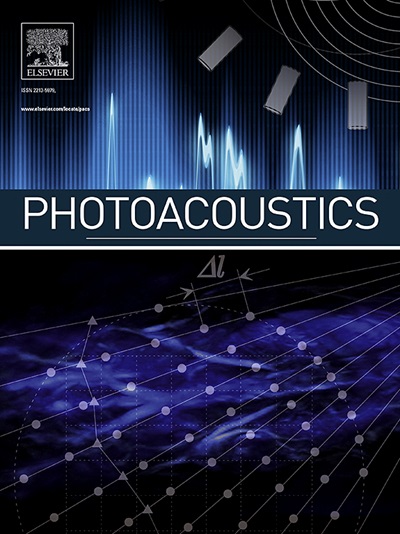Residual-conditioned sparse transformer for photoacoustic image artifact reduction
IF 7.1
1区 医学
Q1 ENGINEERING, BIOMEDICAL
引用次数: 0
Abstract
Photoacoustic tomography (PAT) combines the high spatial resolution of ultrasound imaging with the high contrast of optical imaging. To reduce acquisition time and lower the cost of photoacoustic imaging, sparse sampling strategy is often employed. Conventional reconstruction methods often produce artifacts when dealing with sparse data, affecting image quality and diagnostic accuracy. This paper proposes a Residual-Conditioned Sparse Transformer (RCST) network for reducing artifacts in photoacoustic images, aiming to enhance image quality under sparse sampling. By introducing residual prior information, our algorithm encodes and embeds it into local enhancement and detail recovery stages. We utilize sparse transformer blocks to identify and reduce artifacts while preserving key structures and details of the images. Experiments on multiple simulated and experimental datasets demonstrate that our method significantly suppresses artifacts and improves image quality, offering new possibilities for the application of photoacoustic imaging in biomedical research and clinical diagnostics.
残差条件稀疏变换光声图像伪影还原
光声层析成像(PAT)结合了超声成像的高空间分辨率和光学成像的高对比度。为了减少光声成像的采集时间和成本,通常采用稀疏采样策略。传统的重建方法在处理稀疏数据时会产生伪影,影响图像质量和诊断精度。本文提出了一种残差条件稀疏变压器(RCST)网络,用于减少光声图像中的伪影,以提高稀疏采样条件下的图像质量。该算法通过引入残差先验信息,将残差先验信息编码并嵌入到局部增强和细节恢复阶段。我们利用稀疏变换块来识别和减少伪影,同时保留图像的关键结构和细节。在多个模拟和实验数据集上的实验表明,我们的方法显著抑制了伪影,提高了图像质量,为光声成像在生物医学研究和临床诊断中的应用提供了新的可能性。
本文章由计算机程序翻译,如有差异,请以英文原文为准。
求助全文
约1分钟内获得全文
求助全文
来源期刊

Photoacoustics
Physics and Astronomy-Atomic and Molecular Physics, and Optics
CiteScore
11.40
自引率
16.50%
发文量
96
审稿时长
53 days
期刊介绍:
The open access Photoacoustics journal (PACS) aims to publish original research and review contributions in the field of photoacoustics-optoacoustics-thermoacoustics. This field utilizes acoustical and ultrasonic phenomena excited by electromagnetic radiation for the detection, visualization, and characterization of various materials and biological tissues, including living organisms.
Recent advancements in laser technologies, ultrasound detection approaches, inverse theory, and fast reconstruction algorithms have greatly supported the rapid progress in this field. The unique contrast provided by molecular absorption in photoacoustic-optoacoustic-thermoacoustic methods has allowed for addressing unmet biological and medical needs such as pre-clinical research, clinical imaging of vasculature, tissue and disease physiology, drug efficacy, surgery guidance, and therapy monitoring.
Applications of this field encompass a wide range of medical imaging and sensing applications, including cancer, vascular diseases, brain neurophysiology, ophthalmology, and diabetes. Moreover, photoacoustics-optoacoustics-thermoacoustics is a multidisciplinary field, with contributions from chemistry and nanotechnology, where novel materials such as biodegradable nanoparticles, organic dyes, targeted agents, theranostic probes, and genetically expressed markers are being actively developed.
These advanced materials have significantly improved the signal-to-noise ratio and tissue contrast in photoacoustic methods.
 求助内容:
求助内容: 应助结果提醒方式:
应助结果提醒方式:


